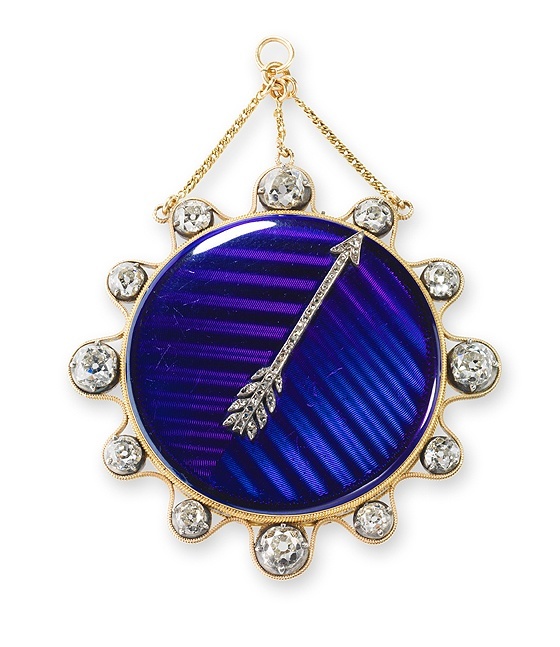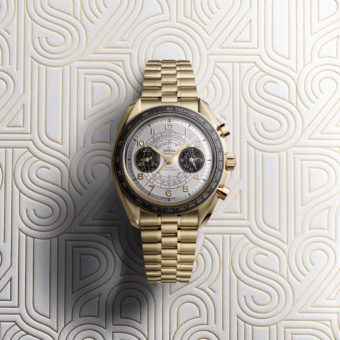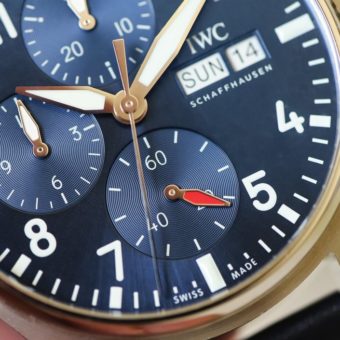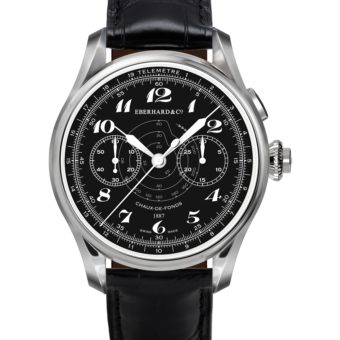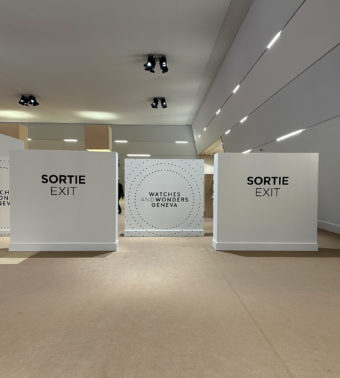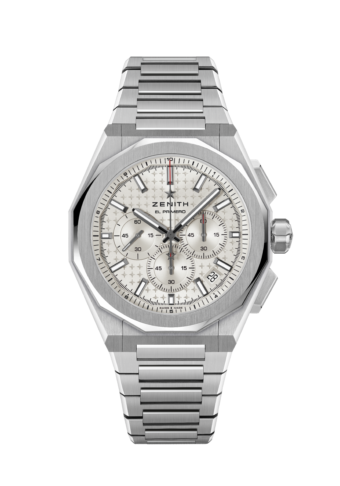“Breguet: Art and Innovation in Watchmaking,” the largest exhibition of antique Breguet timepieces ever presented in the United States, opens tomorrow, September 19, 2015, at San Francisco’s Legion of Honor. WatchTime was among a select group of media that got a private tour of the exhibit this week. Here is a look at some of the most significant pieces that will be on display.
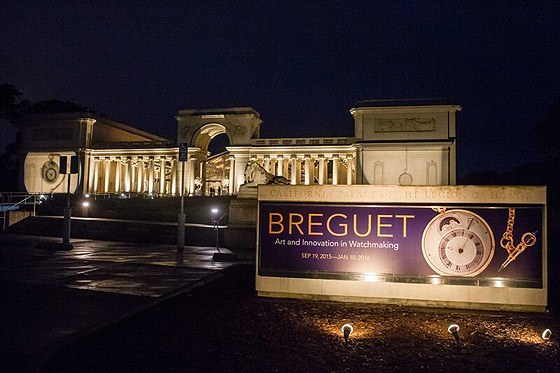
The exhibition consists of 77 historical watches and clocks made by legendary watchmaker (and namesake of the modern Breguet watch brand) Abraham-Louis Breguet and his son Antoine-Louis Breguet. (Our tour was led by Breguet descendant and brand historian Emmanuel Breguet, who worked with Montres Breguet CEO Marc A. Hayek and Martin Chapman, curator of European decorative arts and sculpture at the Fine Arts Museums of San Francisco, in researching and assembling this impressive collection.) The collection is arranged not chronologically but by categories that include Subscription Watches, Simple Watches, Highly Complicated Watches, Marine Chronometers, Chronographs, Repeating Watches, Exceptional Clocks, and, of course, A-L Breguet’s most famous creation, Tourbillons. We’ve shown you three of the highlight pieces in a previous article; here are seven others I took note of during the tour.
Abraham-Louis Breguet was the first to discover a reliable solution to the challenge of creating a self-winding watch (which he referred to as “perpetuelle”). The Breguet No. 5 Automatic quarter-repeating watch with dumb (à toc) repeater (below) was one of the earliest models to incorporate this solution, with a movement powered by a platinum oscillating weight. The watch, with a 54-mm- diameter gold case with engine-turned decoration, has a silver, engine-turned dial with Roman numerals, seconds subdials at 6 o’clock, windows for moon-phases and an indicator for the 60-hour power reserve, and blued steel Breguet hands. The twin-barrel movement features a lever escapement and a compensating balance wheel. This piece was sold March 14, 1794, to Count Journiac-Saint-Meard of France.
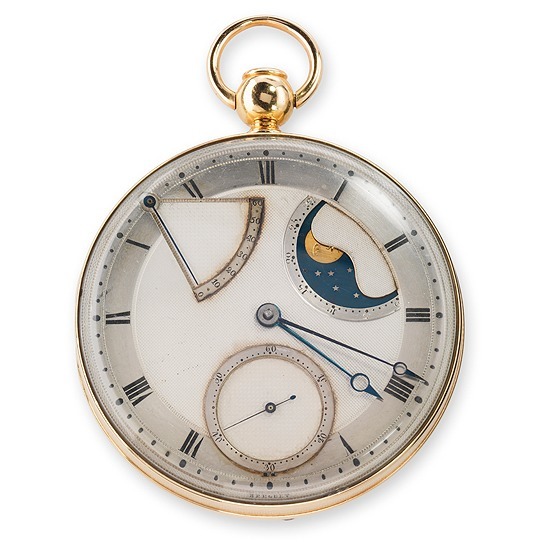
Among the many horological world-firsts associated with Breguet, one is a feature that today’s wristwatch aficionados take very much for granted: the keyless winding crown. The watch below, Breguet No. 180, was one of the first equipped with this now-ubiquitous device. A small (25-mm diameter), gold ring-watch with an alarm function, it has a crown on the right for winding and setting and a smaller alarm-set knob on the left. (How did the alarm work? At a pre-set time, a small needle pricked the wearer’s finger.) The gold dial has an off-center chapter ring with Roman numerals, a seconds subdial at 12 o’clock, blued steel Breguet hands, and a ruby cylinder escapement. It was sold on October 18, 1836, to Count Paul Demidov of Russia.
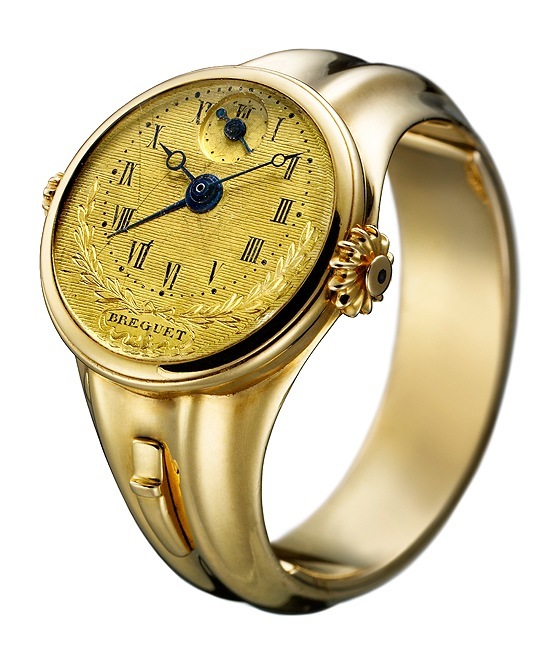
Breguet, his descendant informed me, was not himself particularly fond of highly decorative watches, hence the relatively small number of these in his historic repertoire. However, he and his successors did produce such pieces for distinguished customers in the Turkish market. Referred to as “Montres Turques,” these pieces have enamel dials and distinctive Turkish-style numerals. The watch below, Breguet No. 2090, is an example. Made for His Excellency Esseid Ali Effendi, the Ottoman ambassador to France and a friend to Breguet, it is a quarter-repeating watch with grande and petite sonnerie. The case and double case are engraved and enameled with blue and red decoration, and the movement has a ruby cylinder escapement. It measures 64 mm in diameter and was sold on September 16, 1808.
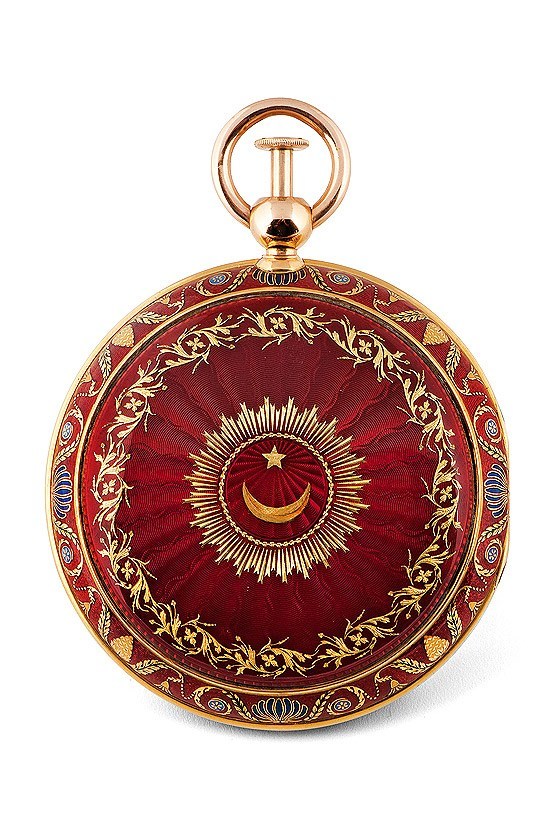 Breguet’s connection to the Bonaparte family are well-known. One of the most historically significant pieces in the exhibit is the Breguet N°178 (below), which is not only considered the first modern carriage clock, but was also bought, in April 1798, by Napoleon Bonaparte. A quarter-repeating travel clock with a gilt bronze case with Doric columns and four glassed sides, its silver dial has a large moon-phase display window. Engraved scrollwork adorns the plaques of gilded metal at the top and bottom, and the date, month, and day of week are displayed in three small windows. The movement, also made of gilded metal, has an eight-day power reserve, straight-line lever escapement, and a two-pitch striking mechanism. It is 11 cm high by 7.8 cm wide, and is currently on loan from the Musée National Suisse Prangins.
Breguet’s connection to the Bonaparte family are well-known. One of the most historically significant pieces in the exhibit is the Breguet N°178 (below), which is not only considered the first modern carriage clock, but was also bought, in April 1798, by Napoleon Bonaparte. A quarter-repeating travel clock with a gilt bronze case with Doric columns and four glassed sides, its silver dial has a large moon-phase display window. Engraved scrollwork adorns the plaques of gilded metal at the top and bottom, and the date, month, and day of week are displayed in three small windows. The movement, also made of gilded metal, has an eight-day power reserve, straight-line lever escapement, and a two-pitch striking mechanism. It is 11 cm high by 7.8 cm wide, and is currently on loan from the Musée National Suisse Prangins.


Breguet was also a provider of marine chronometers for the French Navy. Marine chronometers were one of a ship’s most valuable instruments, used for such vital functions as calculating longitude at sea. These precision timekeeping devices — such as the one below, Breguet No. 5107 — usually consisted of a large movement in a cylindrical brass casing, attached to a sturdy wooden box that acted as stabilizer and shock absorber. This model, on loan from the French Ministry of the Navy (and sold to it on January 9, 1841) has twin barrels, a mahogany outer case with brass hinges and handles, clock case and Cardan suspension, a silver dial with a subdial for hours and minutes and separate subdial for seconds, a power-reserve indicator,and an Earnshaw spring detent platform escapement.
 “Breguet: Art and Innovation in Watchmaking,” which kicked off in grand style with a gala dinner at the Legion of Honor and featured modern Breguet watches on display in the museum’s famed Rodin sculpture gallery, runs from September 19, 2015 through January 10, 2016.
“Breguet: Art and Innovation in Watchmaking,” which kicked off in grand style with a gala dinner at the Legion of Honor and featured modern Breguet watches on display in the museum’s famed Rodin sculpture gallery, runs from September 19, 2015 through January 10, 2016.


